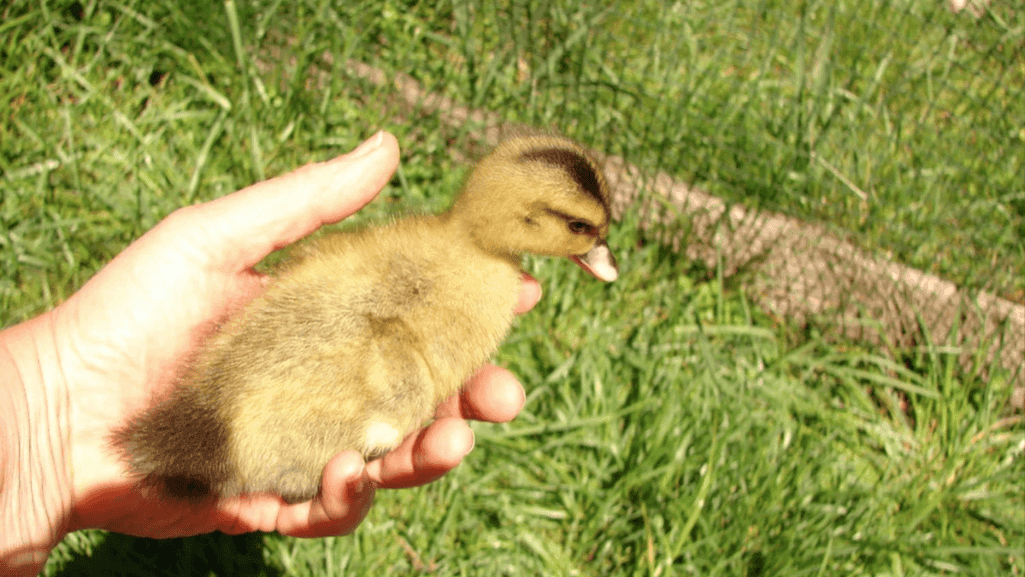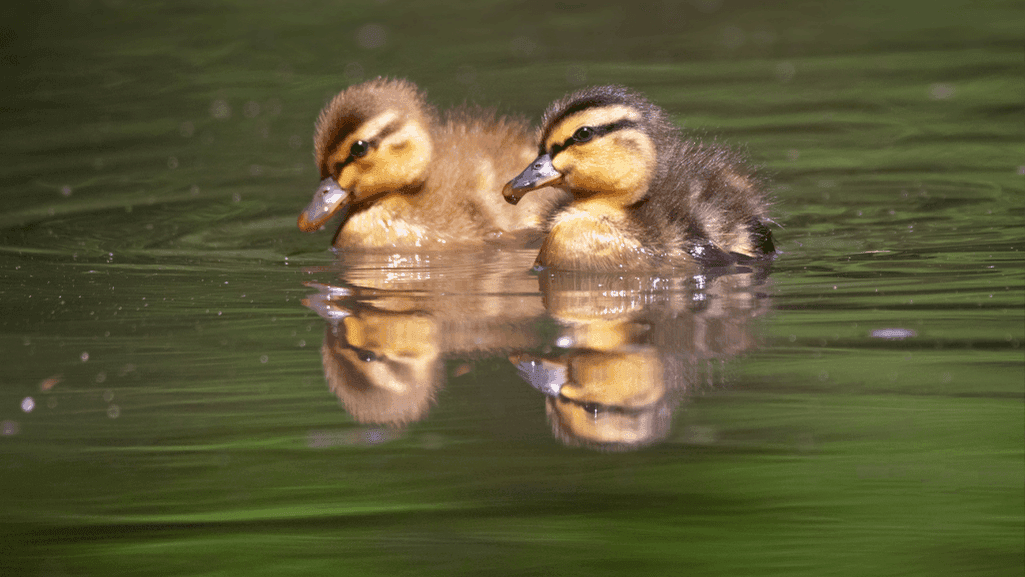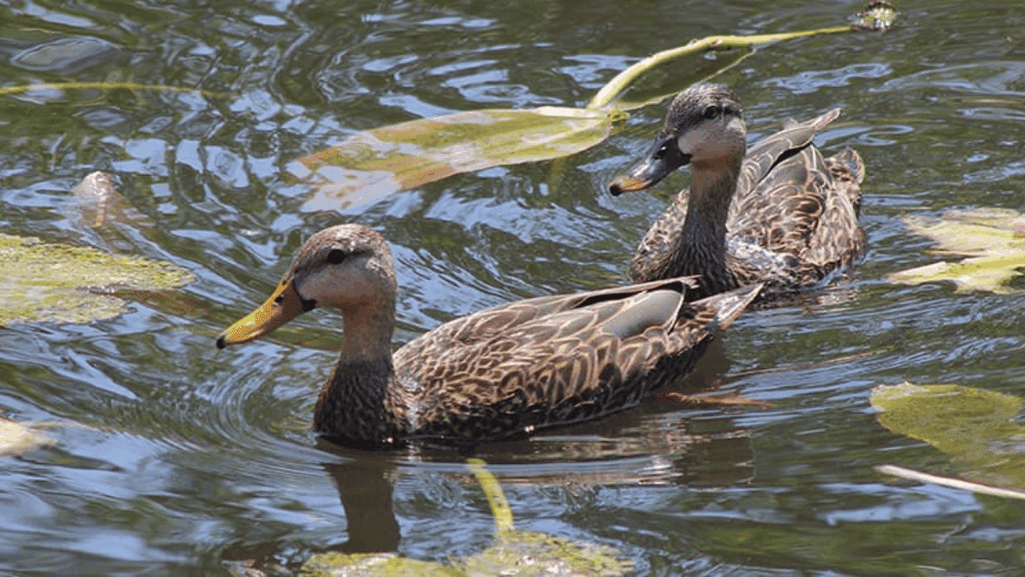Watching wild ducklings in their natural home is a joy for many. It’s important to know how to spot them for bird studies and to help protect them. This guide will help you learn how to tell wild ducklings apart, making it easier to see them in the wild.
Ducklings are the babies of ducks and have special traits that set them apart from grown birds. Knowing what they look like, how they grow, and their colors is key to identifying them. Also, learning about their life stages, common types, and behaviors will help you spot them during bird watching and surveys.
Key Takeaways
- Ducklings have unique features and colors that help identify them.
- Knowing their life stages and growth is important for spotting them.
- Learning about common duckling species like Mallards and Wood Ducks helps in identification.
- Watching how ducklings behave, like how they eat and sound alarms, gives clues for field identification.
- Using the right tools and following safe practices is important for observing ducklings in the wild.
Understanding Duckling Characteristics
To spot wild ducklings in their natural habitats and wetlands, knowing their traits is key. Look at their body shape, color, and size. This helps you tell different species apart.
Anatomy and Features
Notice the shape of their bills. Northern shovelers and canvasbacks have unique bills. Also, the way their feathers are colored, like white patches, can help identify them, even when it’s hard to see.
For example, female gadwalls have a white patch on their secondaries. This patch helps tell them apart from mallard hens.
Color Patterns and Variations
Ducklings come in many colors, depending on the species and even within breeds. Mallards have yellow and dark brown feathers for hiding. They also have a dark line through their eye.
Muscovy ducklings can be yellow, brown, or a mix. They might have beaks in colors like brown, black, gray, pink, or orange. Spotting these small differences can help you know which species you’re looking at.
“Different duck breeds can have various colors of feet and beaks including yellow, orange, gray, bluish, black, or brown.”
Size and Weight Considerations
Size and weight can be tricky to judge from afar. But they’re useful clues for identifying wild ducklings. For example, Indian runner ducks stand tall, unlike other ducks.
Knowing the usual sizes and weights of ducklings helps you spot them in wetland ecosystems.
The Life Cycle of a Duckling
Knowing how a duckling grows is key for spotting them and enjoying bird watching. Ducklings go through many exciting stages from hatching to becoming independent.
Hatching and Initial Development
The adventure of a duckling starts with hatching, which takes about 24 hours. Female mallards lay 8–13 eggs daily during breeding. The eggs incubate for 26 to 30 days.
After hatching, ducklings spend at least 10 hours in their nests. They dry off and learn to use their legs before exploring the world.
Key Milestones in Growth
Ducklings are born ready to walk, swim, and eat on their own. But they need their mother’s care for a long time. They eat protein-rich foods, like aquatic invertebrates, to grow fast.
Duckling survival varies from less than 10 percent to up to 70 percent. This depends on predators and the quality of their habitat.
“Duckling survival is greater in landscapes containing abundant seasonal wetlands with a mix of emergent vegetation and open water.” – Waterfowl Management Study
Learning to Swim and Forage
As they grow, ducklings learn from their mother. They learn to swim and find food. Dabbling ducks feed by tipping their bodies forward, while diving ducks dive down completely.
Female mallards stay with their ducklings for about 45 to 60 days. This time is vital for the ducklings to learn and get ready for life on their own.
Common Species of Wild Ducklings
Knowing the common duck species helps when identifying wild ducklings. In North America, many ducklings can be found in different places. Let’s explore some of these young birds.
Mallard Ducklings
Mallard ducklings are easy to spot and found everywhere. They are bigger than ducklings of other species at the same age. A special feature is a line from their bill to their head.
Wood Ducklings
Wood ducks are common in eastern areas, like Nebraska. They nest in tree holes and can be seen in cities. Wood ducklings are smaller than mallards at the same age.
They don’t have the bill-to-eye line like mallards. But, they have a line from their eye to the back of their head.
Northern Pintail Ducklings
Northern pintail ducklings are a joy to watch. They have a long neck and pointed tail. You can find them in wetlands across North America.
They eat plants and small animals in the water. Spotting northern pintails can be harder because they don’t have the head lines of mallards and wood ducks.
There are 64 different wild duckling species. From the American Black Duck to the Hooded Merganser, they come from North America, Europe, and Asia-Pacific. Each has its own look and ways to adapt, showing the amazing variety of wild ducklings.
Identifying Duckling Behavior
Knowing how wild ducklings behave is key to spotting them in the wild. By watching their social groups, how they eat, and their alarm calls, you learn a lot. This helps you tell different duck species apart in their natural habitats.
Typical Social Structures
Ducklings stick together in groups called broods, led by their mom. These groups can be small or have over 100 ducklings. In some species, ducklings from different broods join together, which helps them survive.
Feeding Habits
Watching how ducklings eat can tell you what kind they are. They fall into two groups based on how they find food:
- Divers: These ducklings are better at diving in deep water because their legs are set back.
- Dabblers: Dabbling ducklings are great at finding food in shallow water and mudflats. They use their flat bills to sift through the water.
“Duckling survival is positively related to the amount of seasonal emergent wetland habitat on the landscape.”
Alarm Calls and Responses
When scared, ducklings make specific alarm calls to warn others. Knowing these calls and how ducklings react can help you identify them. For instance, mallard ducklings scatter and hide when alarmed. Wood ducklings, on the other hand, freeze and use their colors for camouflage.
By studying duckling behavior and looking at their colors, size, and body features, you can better identify them in the wild.
Tips for Observing Wild Ducklings Safely
Watching wild ducklings in their natural habitats is rewarding for bird lovers. To enjoy this safely, know the best spots, what gear to use, and how to watch them ethically.
Best Locations for Duckling Sightings
Look for wild ducklings in shallow, green wetlands like marshes, ponds, and slow streams. These places offer the right mix of shelter, food, and water for young ducks. You’ll often see Mallards, Wood Ducks, and Pintails here. Remember, duckling sightings change with the season and where you are.
Recommended Equipment for Viewing
A spotting scope is great for far-off ducklings, but binoculars work well too. Choose binoculars with at least 8x magnification and 32mm lens size. This helps you see ducklings clearly, even in dim light.
Best Practices for Ethical Observation
It’s key to not disturb wild ducklings and respect their natural ways. Use binoculars or a scope to watch without stressing them. Stay far away and don’t scare them with loud noises. Always follow wildlife rules and respect private lands. This way, you can enjoy watching young ducks while keeping them safe in their natural homes.











